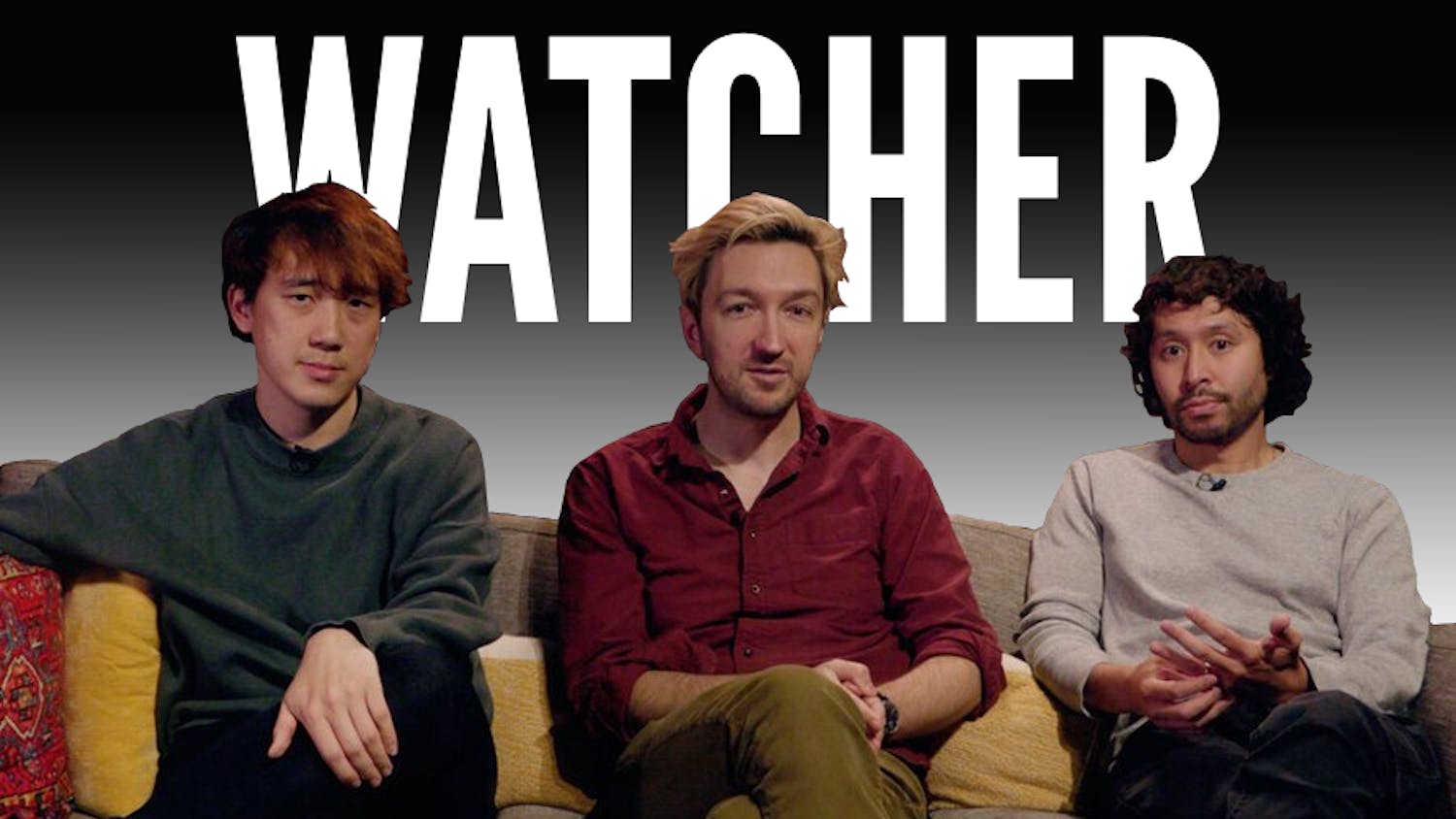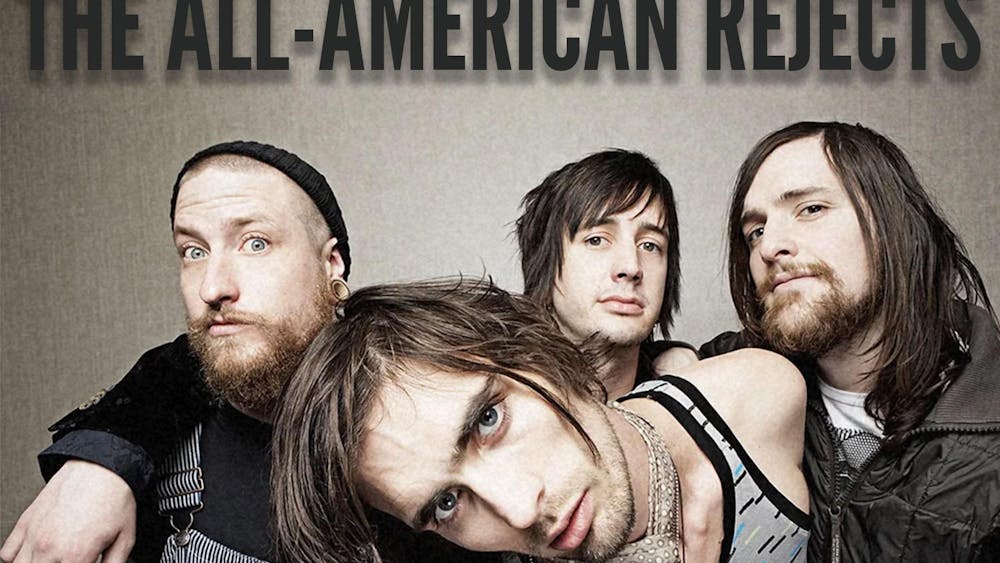The supposed Notre Dame references in the 2001 film "Shrek" that students enthusiastically claim to exist, in the face of the facts or reality, may be no more than urban legend.

A key part of the myth is that members of the crew of "Shrek" are Notre Dame graduates, and they inserted five Notre Dame allusions into the film.
One, that Scottish chemistry professor Graham Lappin is the inspiration for Shrek's character. Two, Lord Farquaad is named after the Carroll Quad ("far quad") and three, the town of Duloc is named after the full title of the University, Notre Dame du Lac. The fourth reference is that the Duloc castle is modeled after the Hesburgh Library, and the fifth is that there is an outline of Main Building on the back of Shrek's vest.
Firstly, Professor Lappin denied the connection between Shrek and himself.
"Shrek's character is not based on me at all," he said. "Mike Myers' family have west-of-Scotland roots, and he used many of the idiosyncrasies of people from that part of the world (there are many) when he was on SNL. I do not know of any Notre Dame grads who have gone off to work for Dreamworks, and no one connected with Dreamworks has told me I am the inspiration for Shrek."
The voice of Shrek was originally to be voiced by Saturday Night Live actor Chris Farley, who agreed to do voice work in 1996, but was unable to finish recording before his unexpected death in 1997. Jim Hill, in an article about the production of the film, wrote that Mike Myers agreed to take the role, but asked for the script to be completely reworked. Myers also decided he wanted to re-record all of Shrek's dialogue with a Scottish accent, after he had already put years' worth of work into the film.
Despite this evidence, some students still insist Lappin is the inspiration for Shrek, claiming Lappin looks and sounds exactly like Shrek.

The second and third myths would also need the influence of writers. Although the name Farquaad does look and sound like "Far Quad," Notre Dame officials told Ed Greenberger of Fox28 that Carroll Quad has never been called "far quad," not even decades ago. Fr. James Lewis, current rector of Carroll Hall, said he had no knowledge of such a reference and did not know of anyone who went to work for Dreamworks.
Furthermore, there is just as much if not more speculation that Lord Farquaad is meant to look like Disney chief Michael Eisner, a nemesis of Dreamworks producer Jeffrey Katzenburg. Peter Bradshaw of The Guardian and Sean Daly of the Washington City Paper further claim that "Farquaad" might be a way to pronounce "f***wad" in a children's film.
The town of Duloc may also be more of a reference to Disney parks than to Notre Dame du Lac. Though they are pronounced the same, they are spelled differently, and the singing wooden puppet show when one enters Duloc is clearly a parody of the "It's a Small World" ride. The Duloc song is in the same key and has the same beats per minute as "It's a Small World."
In the Duloc song, the lyrics "here we have some rules, let us lay them down," are supposedly meant to allude to du Lac: A Guide to Student Life rulebook while "please keep off of the grass" supposedly refers to the rule to not to walk on the grass on "God Quad."
A Notre Dame allusion that an animator might be able to insert is the structure of the Hesburgh Library. A visual comparison of the two shows the unlikelihood that the library inspired the castle. Though both are tall, rectangular buildings, this is the end of the similarities. The Duloc castle is a gray color, and its highest points at the top are the four corners sticking up. Hesburgh Library is a tan color, and its highest point is the flat rectangular portion on the top, with the sides of the building lower and further back than the front side with the mural on it.
The second visual allusion is the supposed outline of Main Building in the pattern on the back of Shrek's vest. Though the large circle in the center of his vest with the smaller, thinner circle on top of it does look like the Golden Dome with Our Lady on top, production designer James Hegedus denied the likeness.
"There was no intent in the design of the vest to have it resemble the Golden Dome," Hegedus said to Ed Greenberger of Fox28 in May 2010.
Though each of these references alone may not be strong enough evidence to believably allude to Notre Dame, together they might hold more weight. This is the final, most important part of the myth: Who in the large crew of Shrek is responsible for the references?
The legends about the Notre Dame graduates are most varied of all the myths. Some online sources said "many of the filmmakers" graduated from Notre Dame, while others said "the writer," "three of the four writers," "some of the animators," and even "two writers, who lived in Carroll." None of the assertions online list names.
A search for Dreamworks as a primary employer in the Notre Dame Alumni Directory gave only two results, neither of which are listed as crew members for "Shrek." Additionally, none of the notable alumni listed on the Film, Television, and Theater (FTT) department's page or the Art Department's alumni page work for Dreamworks.
The names of all the writers, animators, producer and directors were searched individually in the Alumni Directory (as of December 2011), which lists alumni that have and have not registered online, as well as lists alumni considered active, inactive, or "lost". For most names, there was no match, even when just the last name was searched. For the few name matches found, a closer look at the alumni and their employment history showed they were doctors, teachers, lawyers or engineers and did not work for Dreamworks or even in the film industry.
However, if a Notre Dame graduate went on to work for Dreamworks, especially the successful and beloved film "Shrek," and even inserted references to Notre Dame into the film, why would the University not proudly claim them? Even if a filmmaker could not openly admit to inserting Notre Dame references, their names as crewmembers are publicly listed online, wouldn't students, peers, friends, faculty, or staff recognize their names?
Where might these rumors have started and how do they spread? Professor Lappin said the rumors about him as the inspiration for Shrek first came to his attention eight or nine years ago when a student in his general chemistry class asked him to say "donkey."
Donald Crafton, FTT professor teaching "Animation Cinema" next semester and author of "Before Mickey: The Animated Film 1898-1928," said the references are an example of an urban legend that got online and from there could not be stopped.
"It's just not local," Crafton said. "If, however, what one hears about
the campus tours is accurate, the [tour] guides also have contributed to its spreading. An alumna of Notre Dame who works at Dreamworks Animation told me specifically that no references to her alma mater were intentionally sneaked into 'Shrek.'"
The complete, 20-page script given to student tour guides (as of December 2011) does not list any of the "Shrek" references, but does in all capital letters deny that South Dining Hall is the inspiration for The Great Hall in the "Harry Potter" series. Senior tour guide Clara Ritger said the tour guides often don't use the master script, but she knows many tour guides who include the "Shrek" references in the tour.
Though it is still possible that a Notre Dame fan who was very familiar with the University (and not just the football team) inserted these references, it will take even more digging. As for the myths, any truth in Notre Dame alums inserting specifically Notre Dame references seems very highly unlikely, if not completely untrue.












